
Hypoxic and anoxic regions in the Baltic Sea, 1994
The content of this webpage is part of the Marine Science Report No 100 2016 and should be cited as:
Susanne Feistel, Rainer Feistel, Dietwart Nehring, Wolfgang Matthäus, Günther Nausch, Michael Naumann: Hypoxic and anoxic regions in the Baltic Sea, 1969 - 2015. Meereswiss. Ber., Warnemünde, 100 (2016) doi: 10.12754/msr-2016-0100
All version information and information on further technical development are available via the website https://www.io-warnemuende.de/msr-2016-0100.html

This work is licensed under a Creative Commons Attribution-NonCommercial 4.0 International License.
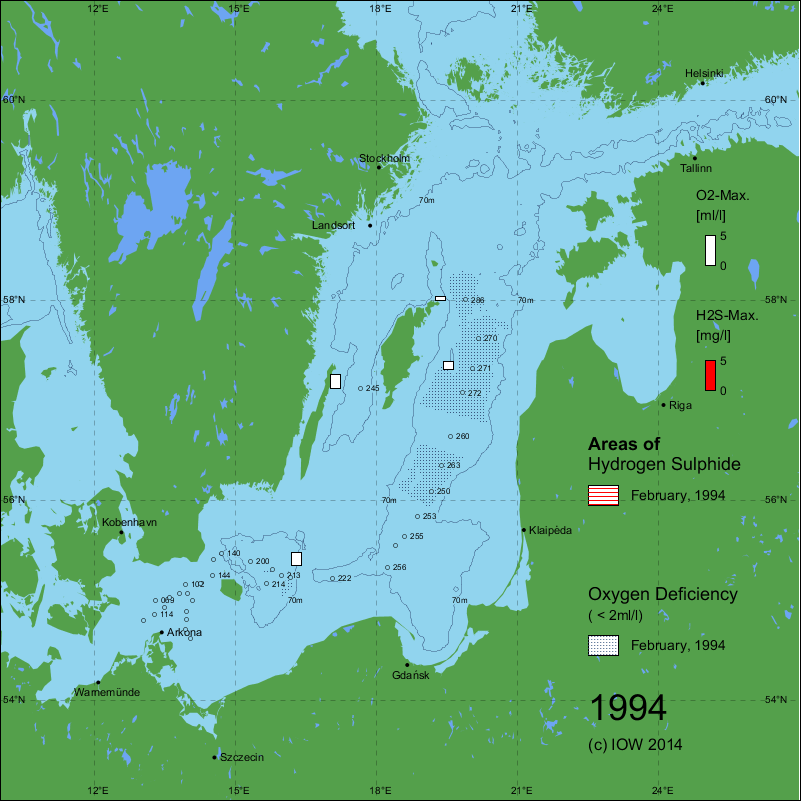
Jan/Feb, 1994: download SVG (computed 2016)
|
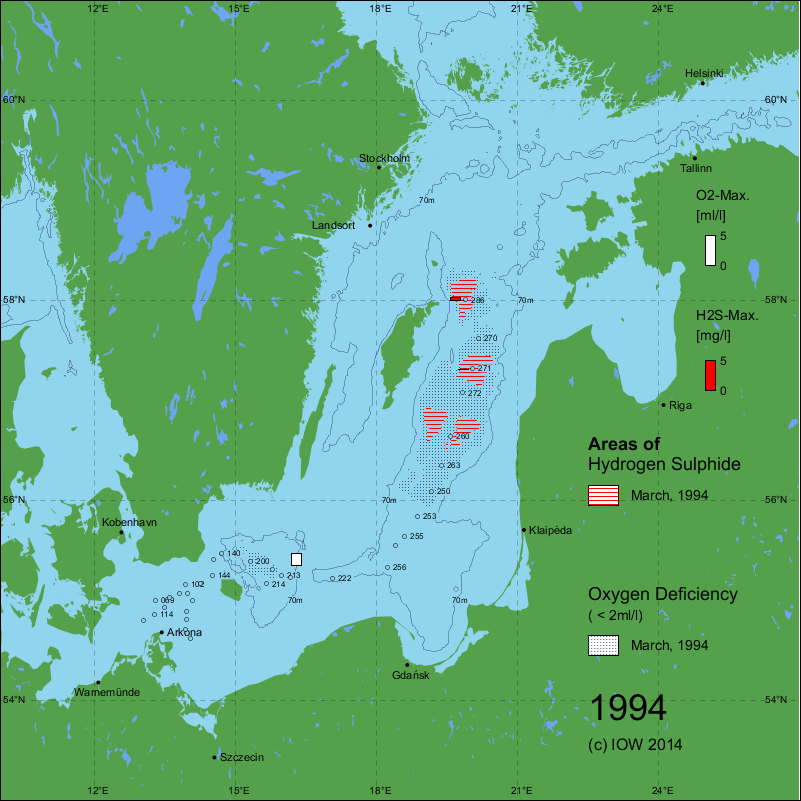
Mar/Apr, 1994: download SVG (computed 2016)
|
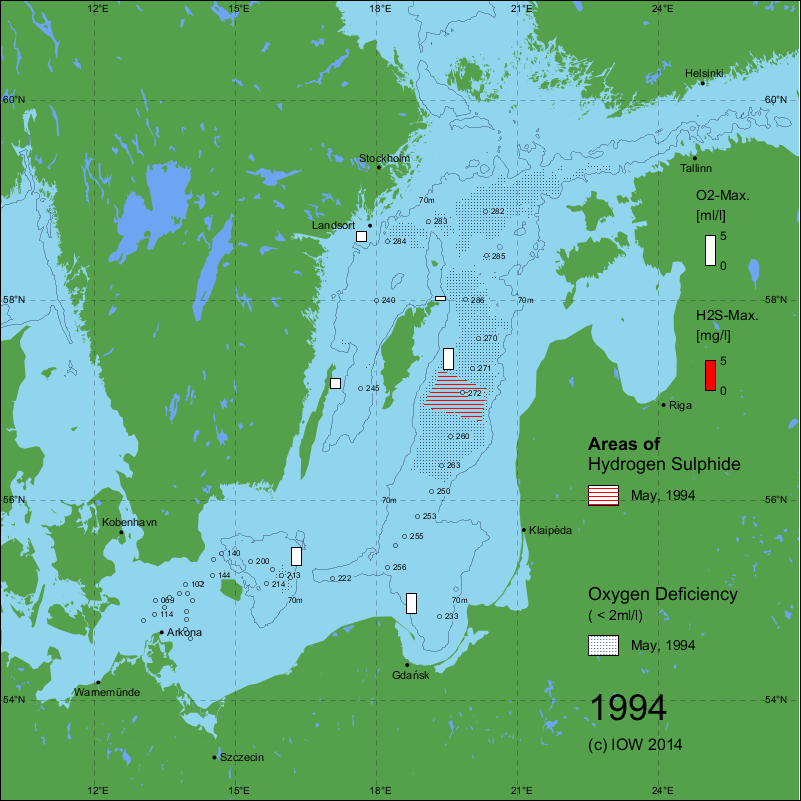
Apr/May, 1994: download SVG (computed 2016)
|
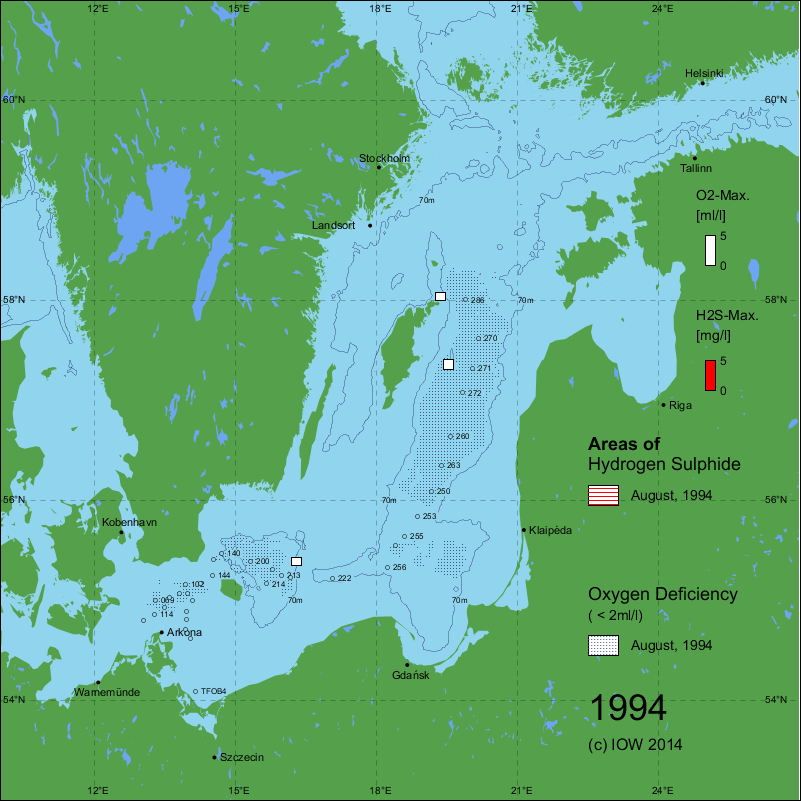
Jul/Aug, 1994: download SVG (computed 2016)
|
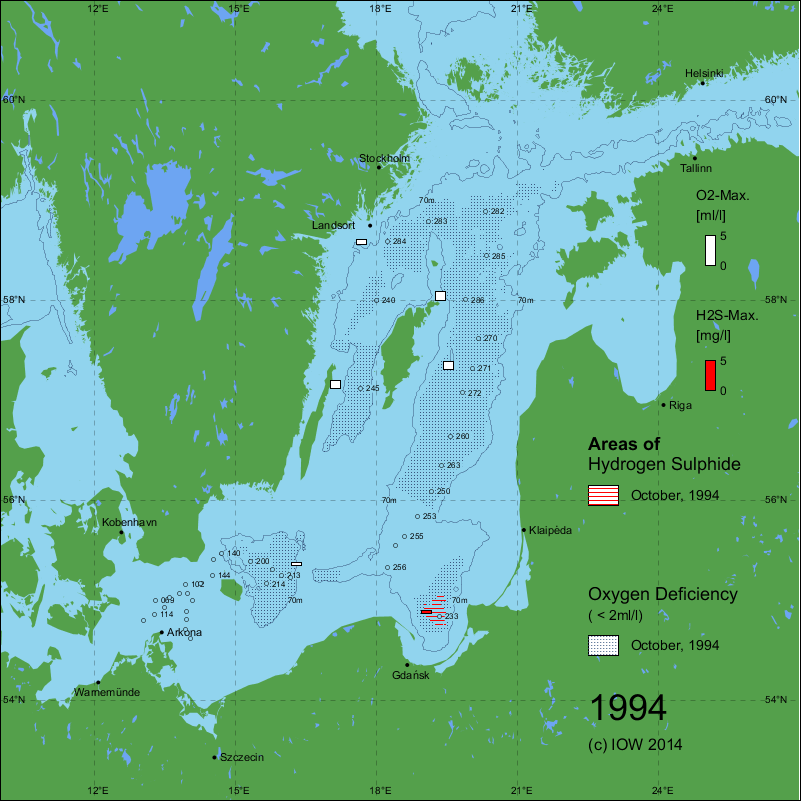
Oct/Nov, 1994: download SVG (computed 2016)
|
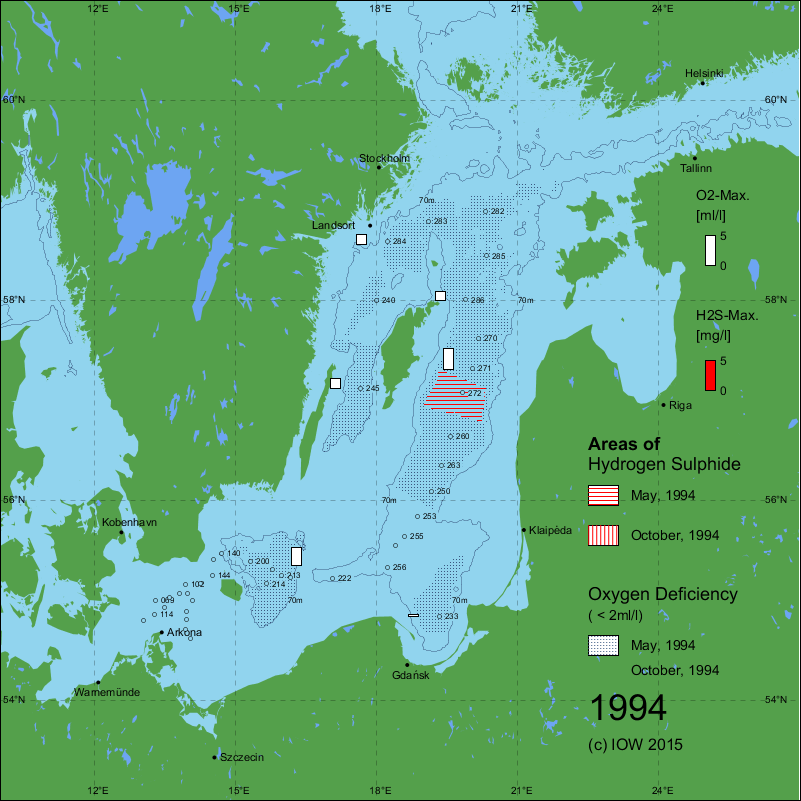
Apr/May & Oct/Nov, 1994: download SVG (computed 2016)
|
| Small inflows in December 1993 and March 1994 in combination with the very strong MBI in January 1993 terminated the 16-year stagnation in the central Baltic. The inflows caused a significant improvement of the oxygen conditions in the eastern Gotland Basin deep water and led to the highest oxygen concentrations since the 1930s (Fig. 3). The favourable oxygen conditions continued until the end of the year (NEHRING et al., 1995a, 1995b). | |
References:
- NEHRING, D., MATTHÄUS, W., LASS, H. U., NAUSCH, G., NAGEL, K., 1995a: Hydrographischchemische
Zustandseinschätzung der Ostsee 1994. – Meereswiss. Ber., Warnemünde, 9, 1-71., doi: 10.12754/msr-1994-0009 - NEHRING, D., MATTHÄUS, W., LASS, H. U., NAUSCH, G., NAGEL, K., 1995b: The Baltic Sea 1994 – Consequences of the hot summer and inflow events. – Dtsch. Hydrogr. Z., 47, 131-144.